Since its launch over 10 years ago, Trello has been the Kanban tool of choice for many because it is easy to use and has a free version suitable for most needs. Does this mean that Trello should be your chosen tool as a project management software solution? Not necessarily, which is why we have come up with a list of Trello alternatives that could better fit your software development team’s needs.
As an aside, if you are a project manager looking to get certified, check out our tutorial listing the Top 5 Project Management Certifications.
What Is Trello?
Trello is project management software that is based in the cloud. It helps teams (especially Agile software development teams), project managers, developers, and individuals create, track, and manage project tasks through the use of boards, lists, and cards. In simple terms, you can think of Trello as a whiteboard where you create virtual Post-it notes and move them around as needed.
Why Choose a Trello Alternative?
While Trello is easy to use, has a simple interface, and offers a free version that gives you the basics to stay organized and on top of tasks, it is not ideal for larger teams or complex projects.
Trello has limited views that may find project managers yearning for more perspectives to get a more detailed understanding of where things stand. And if your company has several departments looking to use the same PM software, they may find the lack of views too restricting. For instance, your development team may want a Gantt chart view, while your marketing team may prefer the Kanban board view to manage tasks. Not having this viewing flexibility could cause issues down the line.
Trello is suitable for collaboration and task management, but lacks many features one would seek out of an all-in-one project management solution. Managing a team is tough with Trello, as you cannot assign multiple team members to one task. Managers will also have a tough time viewing workloads to see which team members are overworked. Trello also falls behind when it comes to reporting. That alone could be enough for many project managers to seek an alternative.
All of that being said, Trello is still an excellent tool for project managers of software development teams or even programmers looking to keep track of bugs, updates, and their work in general. If you want to learn more about Trello, we have a great review highlighting its pros, cons, features, and pricing: Trello review.
Trello alternatives
If you need a Trello alternative to manage your development team and projects, plus boost productivity, give the following options a strong look, as they represent some of the most popular PM tools on the market.
asana
asana is another popular project management tool and Trello competitor. Like Trello, it has a user-friendly interface. Unlike Trello, it offers many more features that project managers and team members can enjoy. Some of Asana’s highlights include multiple views, (timeline, list, Kanban, etc.), Gantt charts with timelines, task automation, and over 50 templates to get you started.
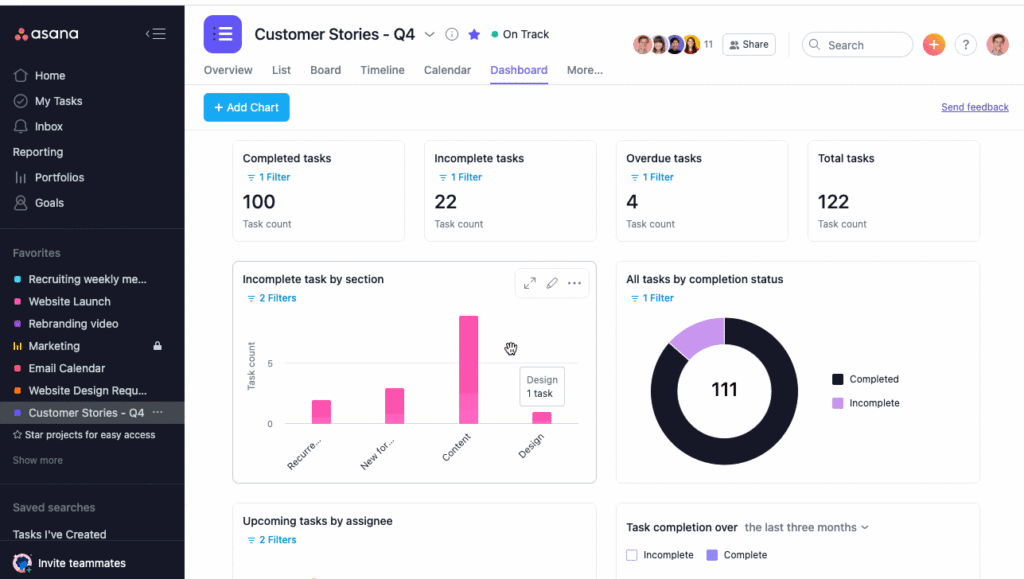
Asana’s pros begin with its goal tracking system that works great for managing progress. The software has solid integration with Microsoft Teams, Basecamp, and more, and its workload management prevents team burnout.
Asana’s cons are that its free version does not have a form view or custom fields. You cannot add multiple signees, and the software lacks native time tracking.
You can read our review of Asana to see if it is the right fit for your team: Asana Project Management Software Review.
base camp
Many remote teams turn to base camp for their project management needs. The web-based PM tool has strong collaborative features that eliminate the need for in-person meetings, and it also has many features to keep teams organized.
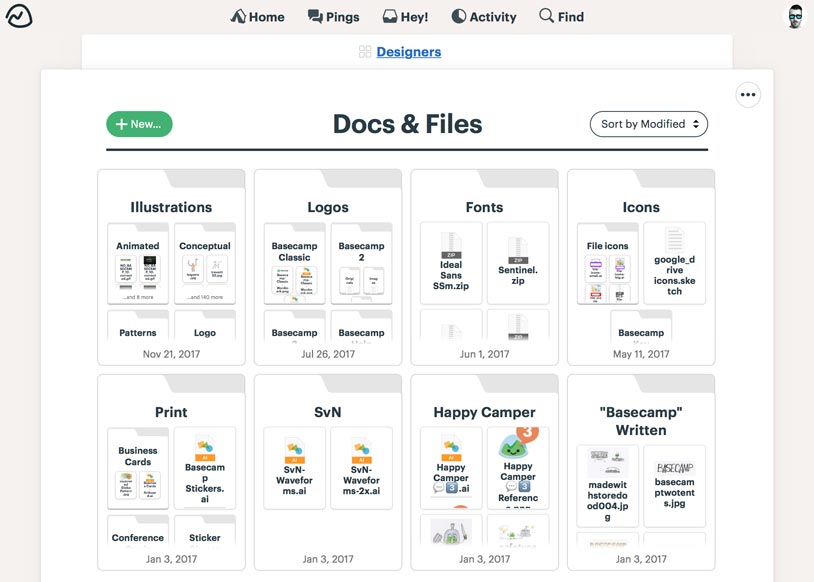
Some of Basecamp’s highlights include file storage and document sharing, real-time chat, email forwards within the software, a robust search for files, images, etc., team message boards, to-do lists, and automatic check-ins.
Basecamp’s pros start with its several options for collaboration. Onboarding is a cinch, as is assigning tasks. And if you want to make management easier, you can do so by breaking up work into separate projects.
Basecamp’s cons are that its performance is slow at times. The dashboard could use more detail to assist with managing projects. Dependency tracking is absent, and when you create sub-groups, Basecamp does not allow you to add tasks with attributes.
You can read our Basecamp Project Management Software Review to learn more about its features.
ClickUp
ClickUp is the PM solution of choice for many past Trello users for one simple reason: it comes loaded with views. Even if you select the Free Forever plan, ClickUp gives you 10 views. And, if you opt for a paid plan, you can get over 15 customizable views to see where projects stand.
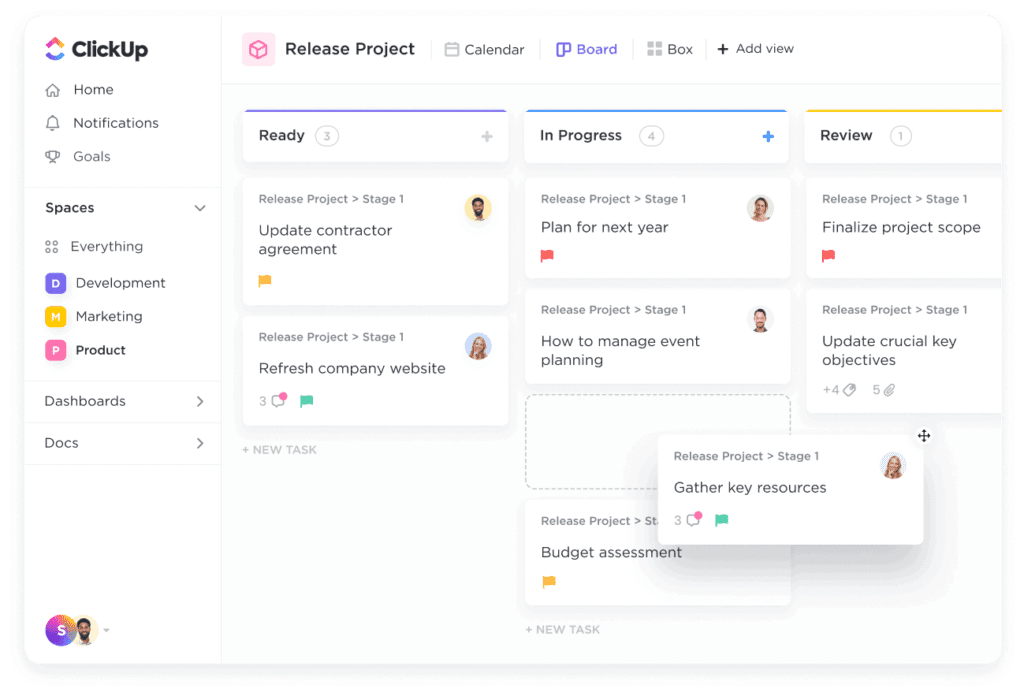
Tracking team tasks and managing workloads is simple as can be with ClickUp, and it also excels at organization thanks to its hierarchy for managing projects. Unlike Trello, which can get chaotic once you add new team members to a project, ClickUp keeps everything organized, regardless of how many new members join.
Other key ClickUp features include task prioritization, integrated emailing within tasks, work in progress limits to prevent team burnout, mind maps, sprint widgets, and a cloud-based collaboration tool to create company documents.
ClickUp’s pros are that it has a user-friendly interface, online and offline modes, plus tons of project templates to get started. The robust free version allows for unlimited users. There are plenty of views for project managers and teams, plus loads of integrations.
ClickUp’s cons are that its mobile app could use a table view. And beginners new to PM software may find all of the features overwhelming.
You can learn more about ClickUp in our article: ClickUp Project Management Software Review.
Jira
Project developers needing a more advanced task management tool than Trello may find Jira to be just what the doctor ordered. It offers project tracking, many integrations, workflow extensions, team planning, collaboration, reports, real-time notifications, scrum boards, and more.
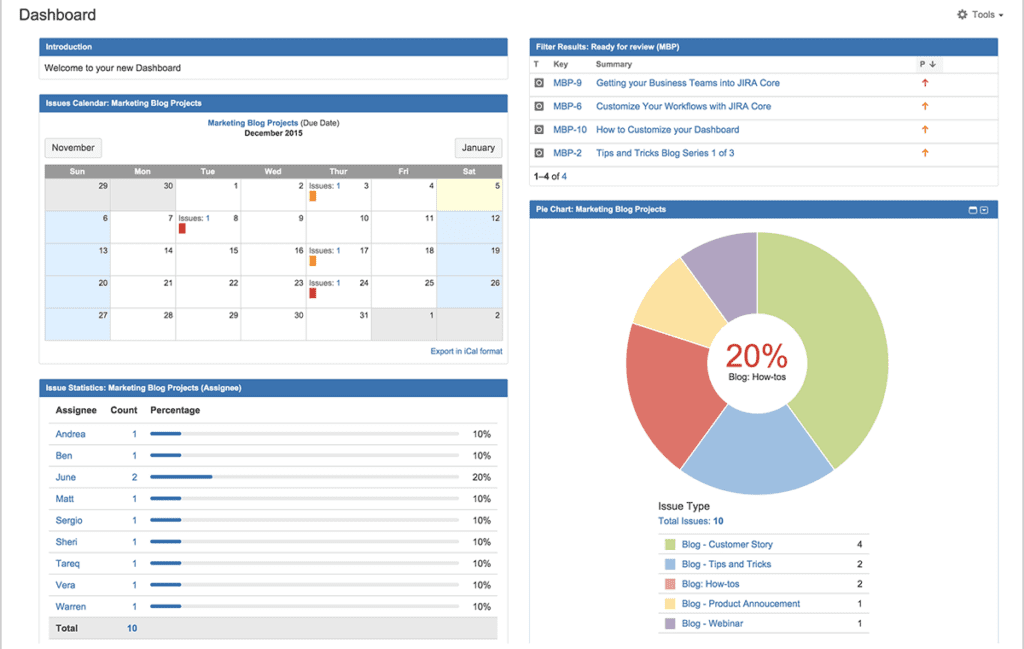
Reasons to choose Jira over Trello include its project flexibility and issue management. You can boost efficiency with Jira’s customizable workflows, and it’s also highly scalable and can grow as your team starts to expand and flourish.
Reasons to skip Jira and choose another Trello alternative are its sometimes slow performance, lack of user-friendliness, tedious setup, and collaborative features that lag behind competitors. Some may find Jira to be too pricy as well, as its Premium plan costs $14 per month per user.
Read our Jira Review: Features and Pricing article for more details.
Monday.com
Monday.com is a popular Trello alternative since it boosts collaboration and transparency while making project management as simple as possible. The software’s top features include excellent collaborative tools, document management, budget tracking, time tracking, resource management, task scheduling, and multiple integrations.
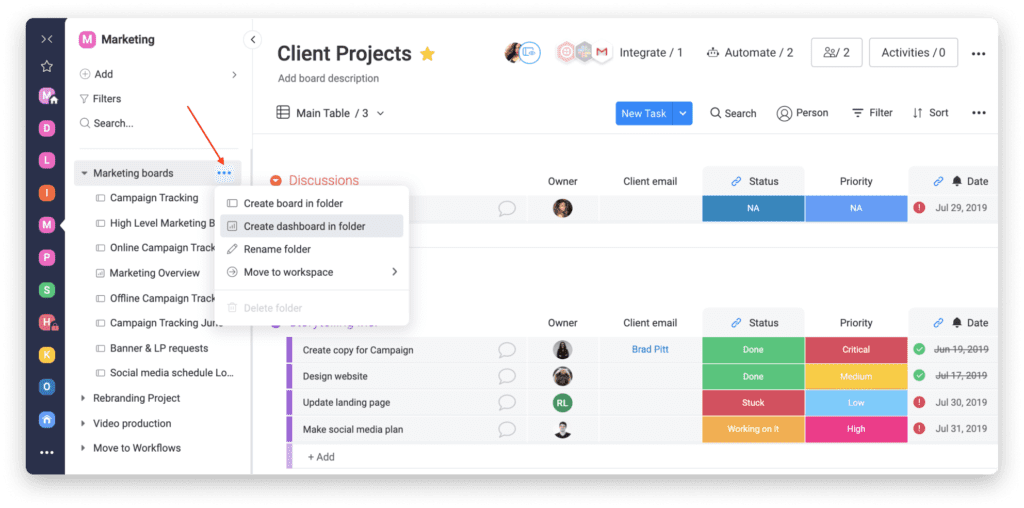
Perhaps the biggest pro of Monday.com is its user-friendliness. If you need a PM tool with a minimal learning curve, this may be it. Monday.com’s collaboration is tough to beat, and the software can also be customized to fit your team’s unique needs.
While minimal, Monday.com does come with some cons. Some report issues with viewing Google Drive files. Although user-friendly overall, integrating with store inventory can be complicated. Lastly, Monday.com lacks an export or download button.
We have a review of Monday.com that goes into more details about its project management features and benefits: Monday.com Project Management Tool Review.
wrike
If you are looking for project management software with a feature-filled free version, you will find it here. Wrike’s base plan is a great no-cost PM solution, even though it may not be the most user-friendly option, especially for beginners.
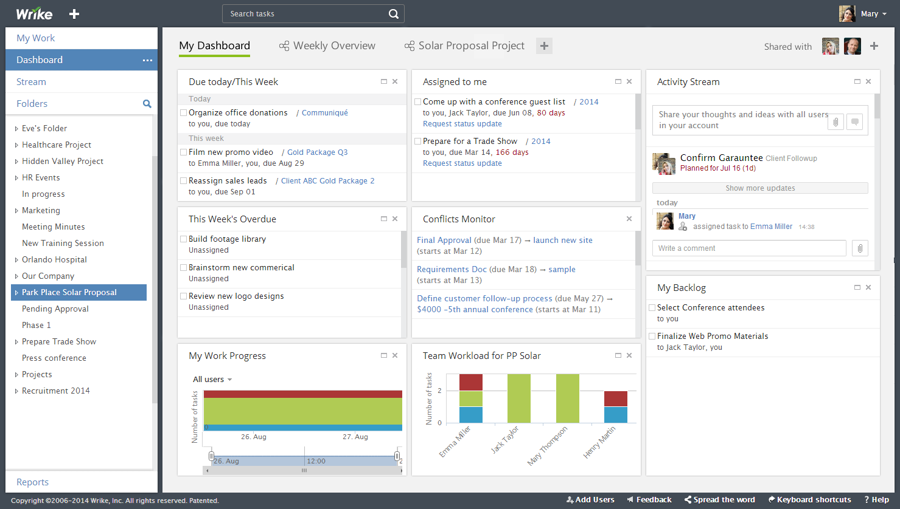
Wrike’s highlights include task priorities to help team members tackle essential to-do items first, detailed reporting with real-time updates, and a project newsfeed to bring everyone up to speed. Wrike also offers integration with Gmail, GitHub, Zapier, and hundreds of other apps.
The pros of this PM software are its built-in time tracking, extensive integrations, and scalability. Wrike’s cons are that it has a learning curve, lacks a note-taking feature, and limits integrations for members of its free plan.
Learn more about Wrike in our Wrike Project Management Software Review.
Other project management software and tools
Looking for more project management tools for your software development team or programming projects? We have a few guides that can help you narrow down your search:
Disclaimer: We may be compensated by vendors who appear on this page through methods such as affiliate links or sponsored partnerships. This may influence how and where their products appear on our site, but vendors cannot pay to influence the content of our reviews. For more info, visit our Terms of Use page.
